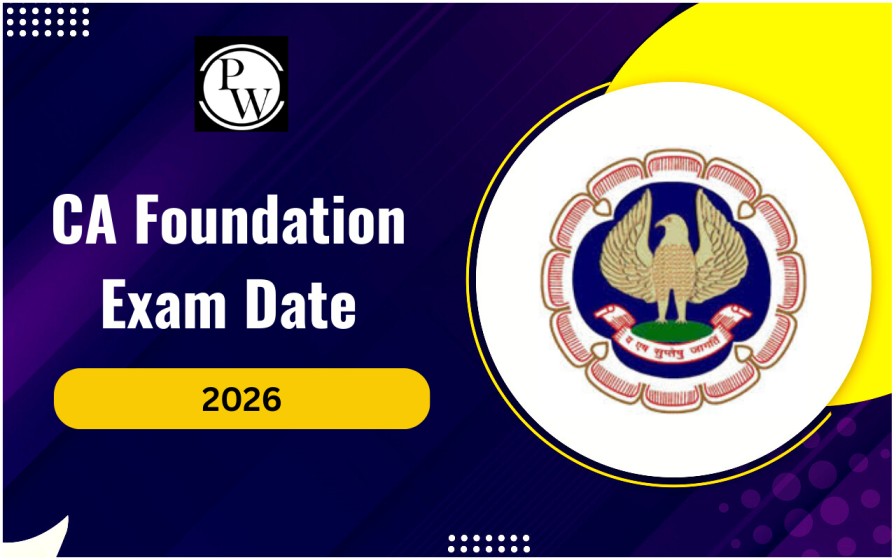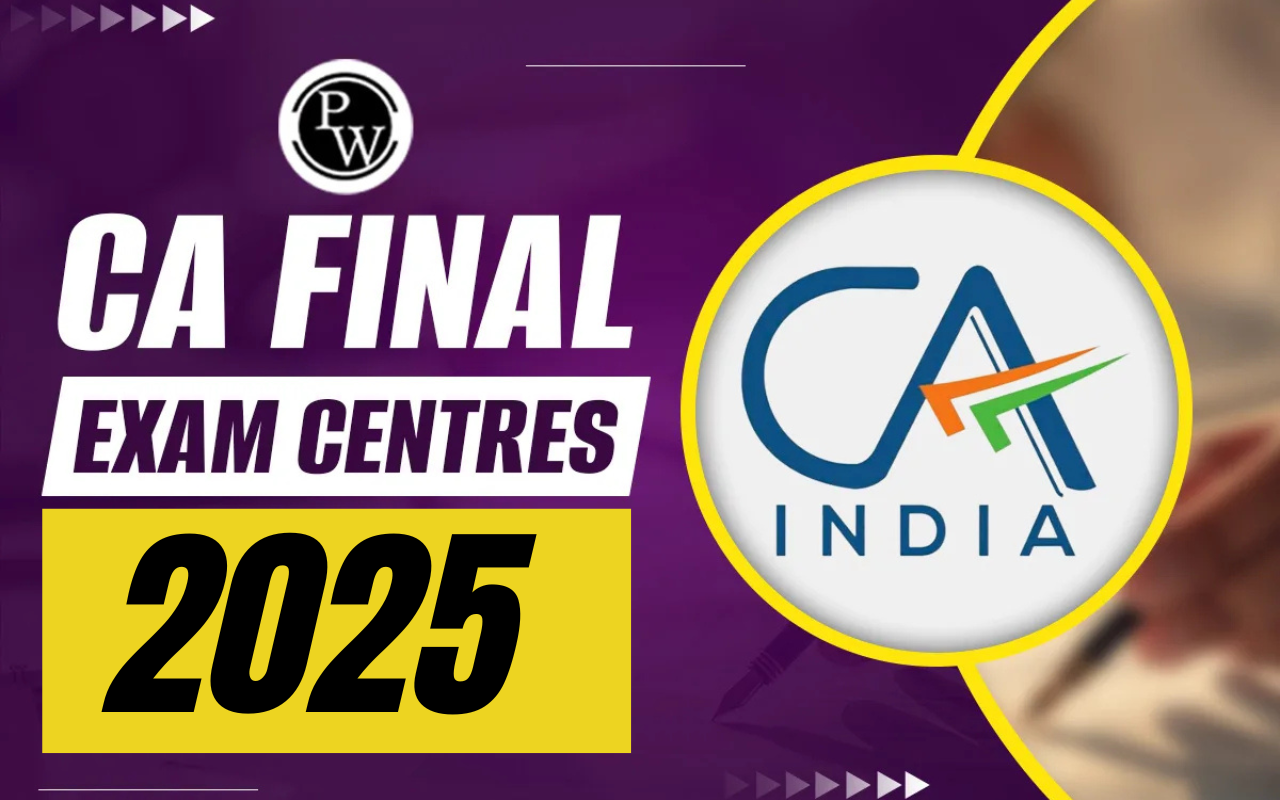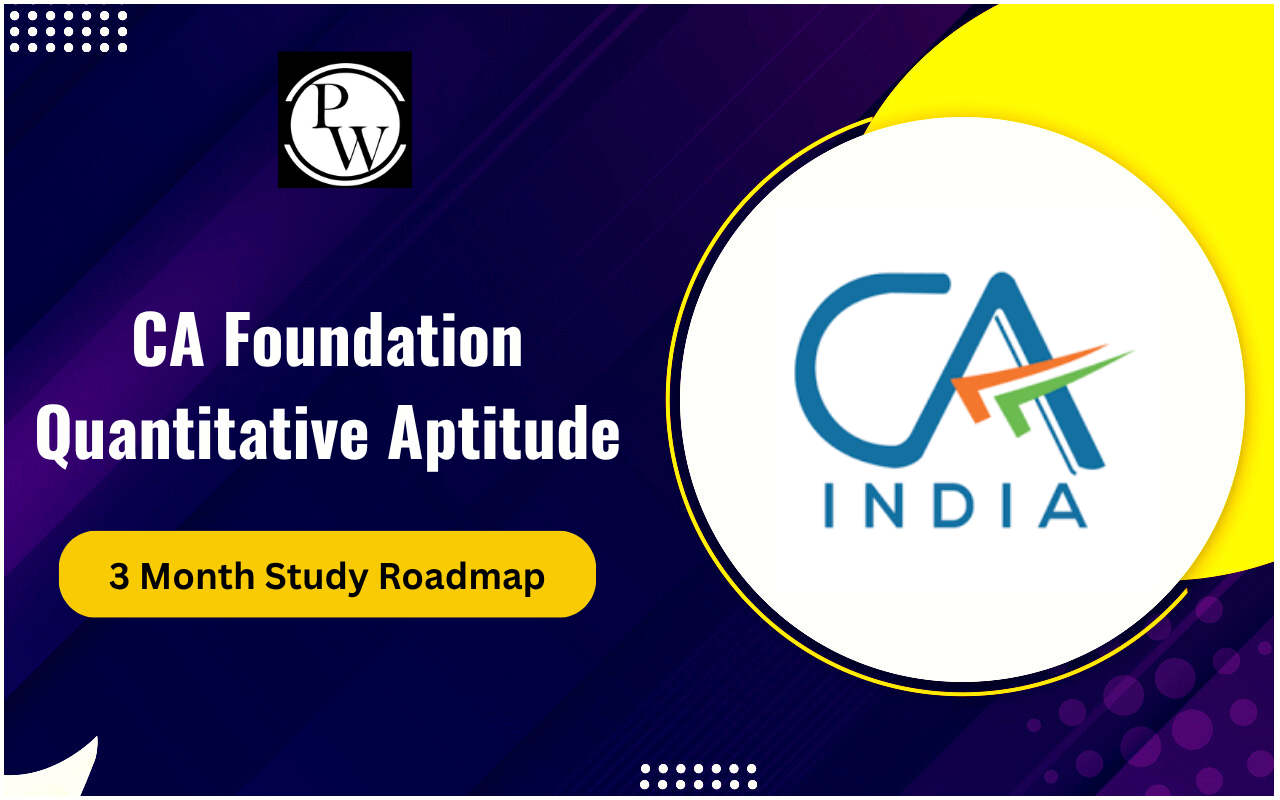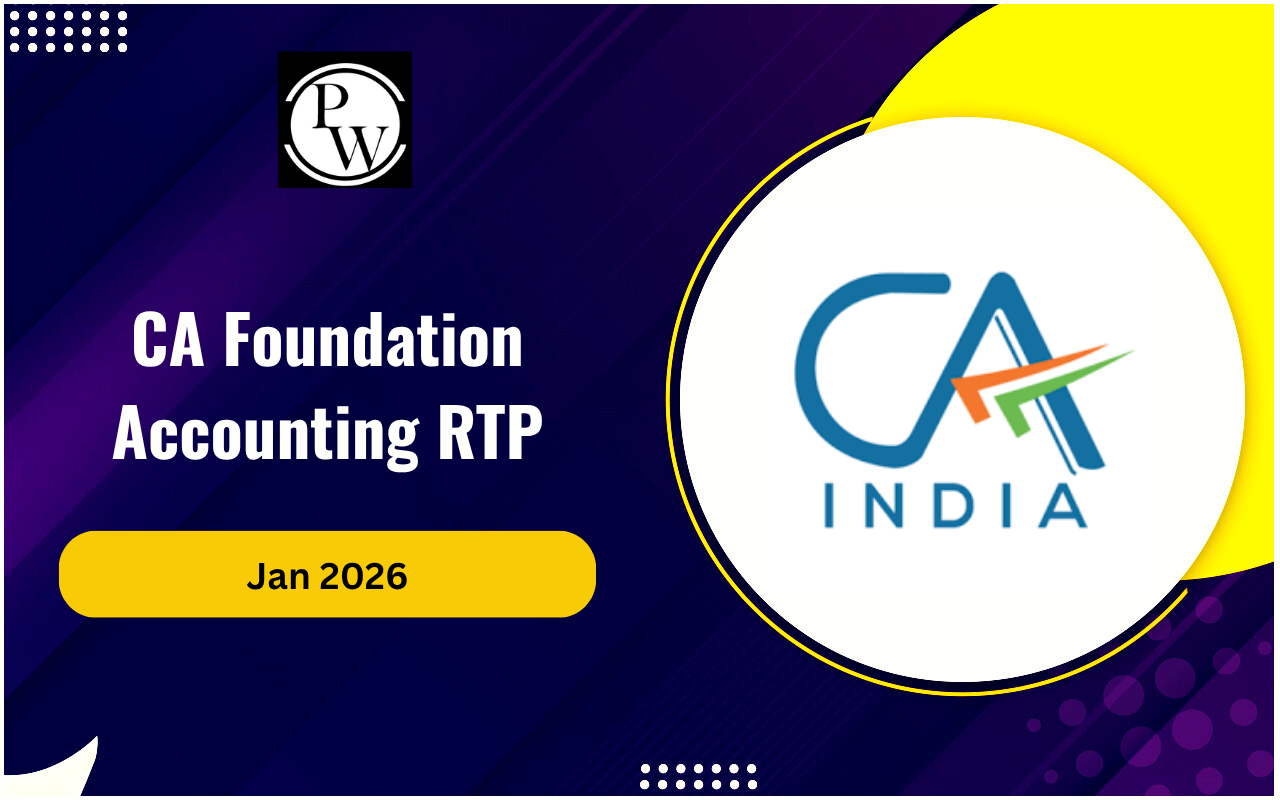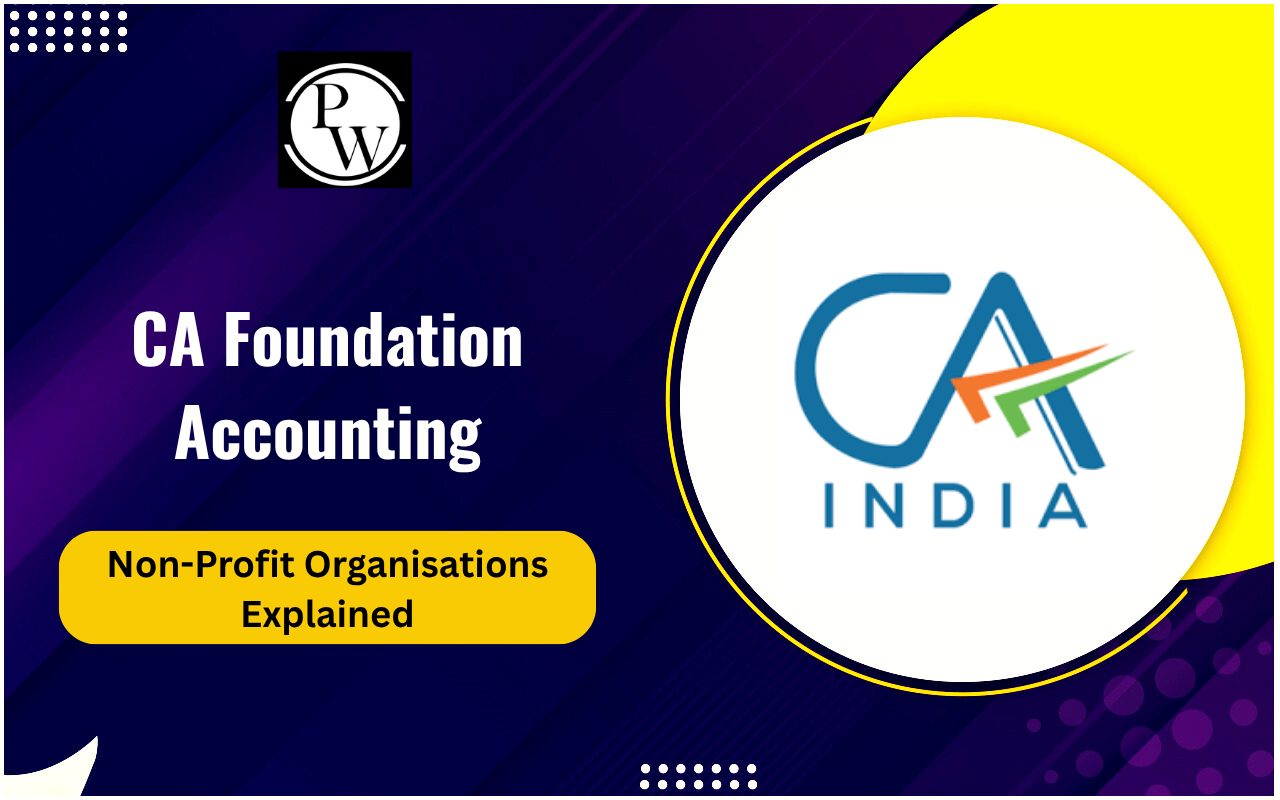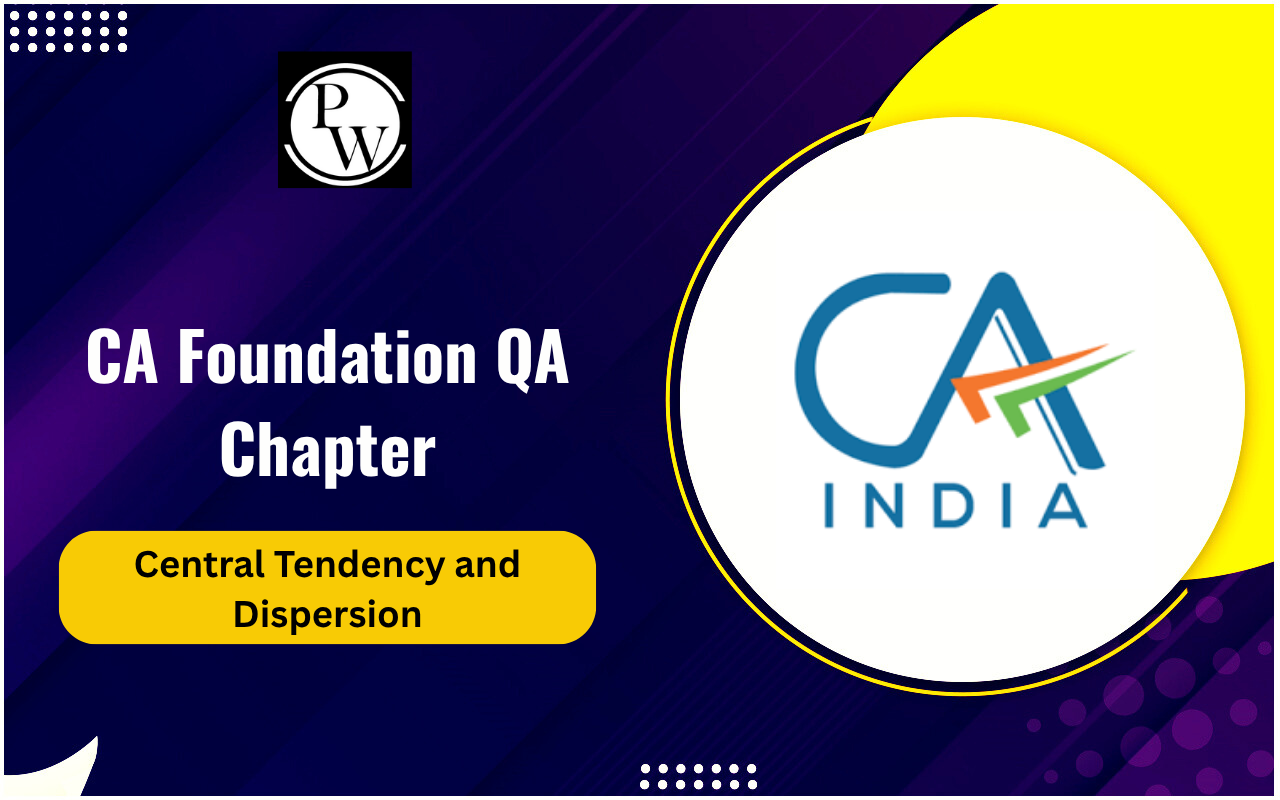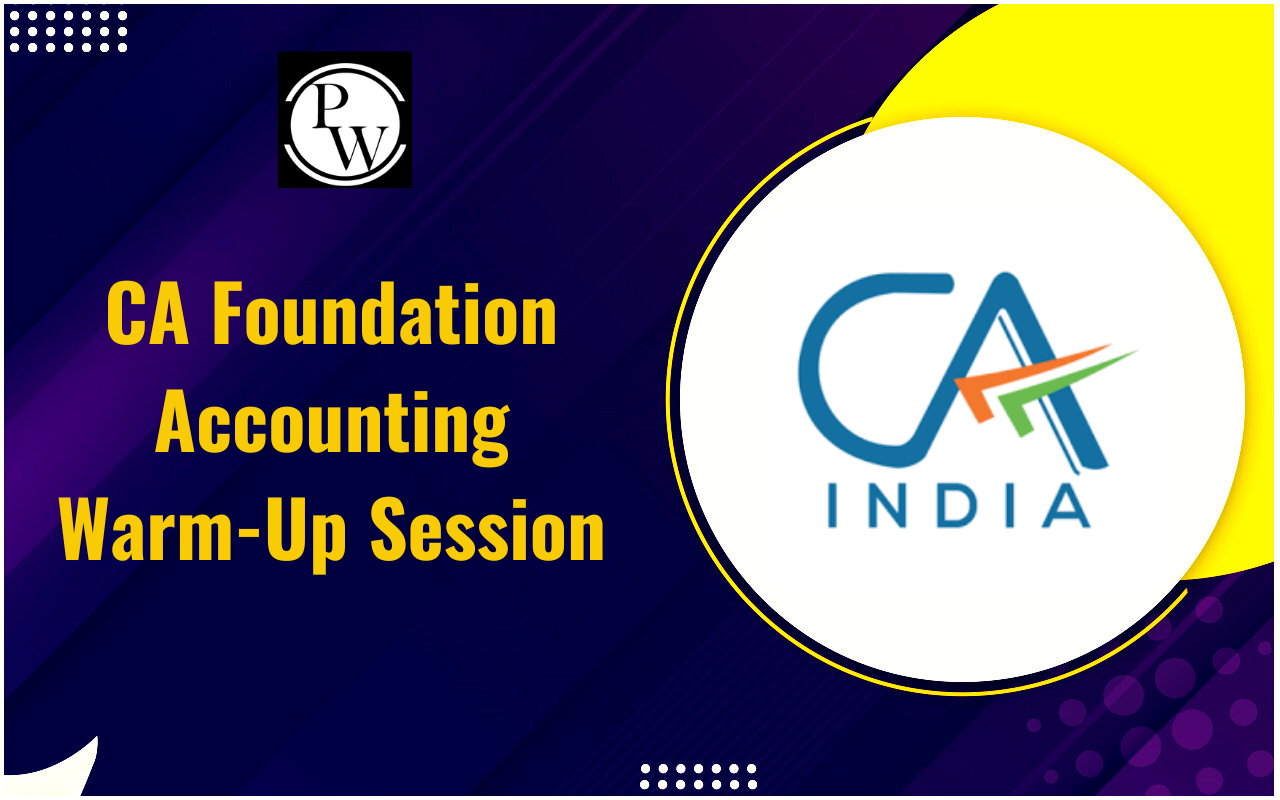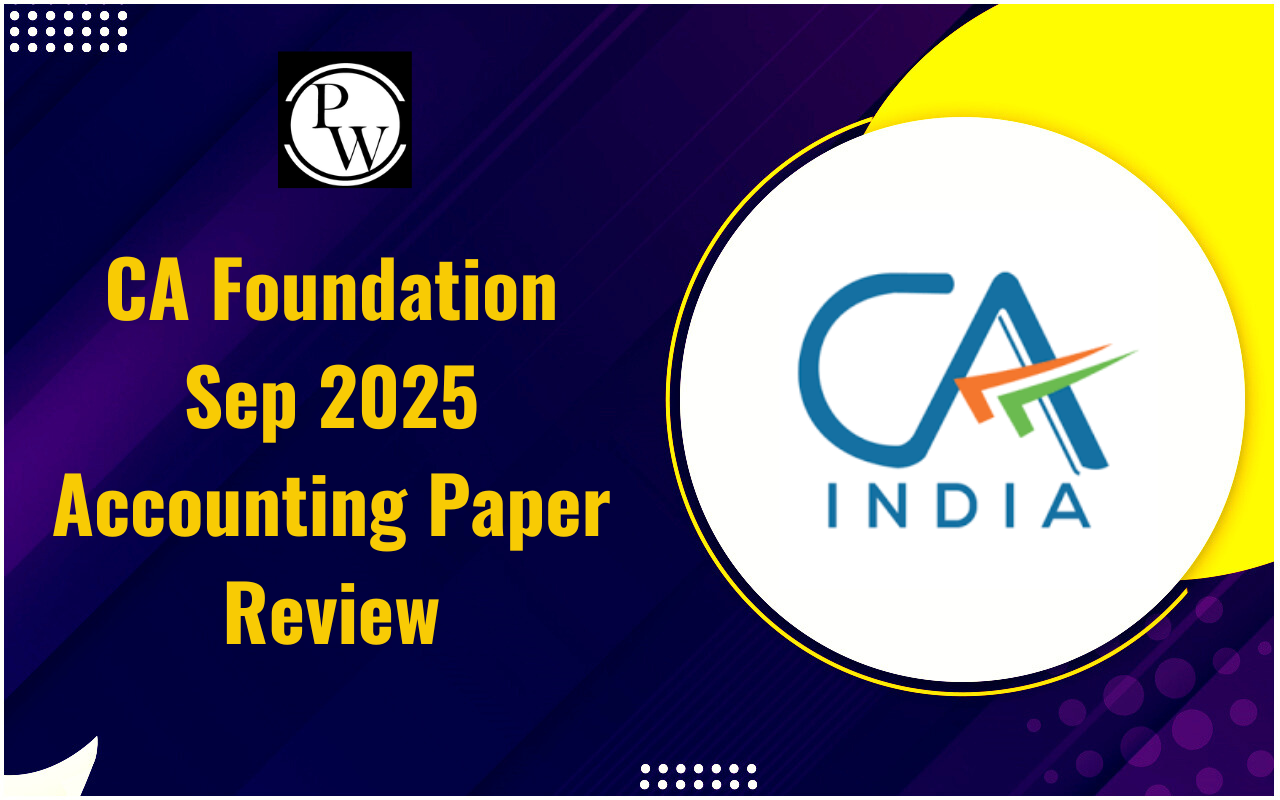
CA Foundation Chapter-wise Weightage 2025: The CA Foundation Course serves as the starting point for aspiring chartered accountants through the Institute of Chartered Accountants of India (ICAI). It's designed for those who have completed secondary school (Class-X) and wish to pursue a career in accountancy. Candidates can register after passing Class 10th, and upon qualifying in the 12th examinations, they can appear for the foundation exam .
Furthermore, ICAI allows provisional registration for students who have passed the 10th class. Therefore, we'll delve into the CA Foundation Chapter-wise Weightage for the 2025 exam, providing valuable insights into the exam's structure and focus areas.CA Foundation Chapter-wise Weightage Overview
Here, check the below table for a quick overview of the CA Foundation Exam 2025:| ICAI CA Foundation Exam 2025 Overview | |
| Particulars | Details |
| Organization | Institute Of Chartered Accountant Of India (ICAI) |
| Exam Name | CA Foundation |
| Level of Exam | National Level |
| Frequency | Thrice a Year (January, May/June, September) |
| Mode of Registration | Online |
| Mode Of Exam | Online |
| Number of Papers | 4 |
| Duration | 3 hours for Paper 1 & 2 2 hours for Paper 3 & 4 |
| Total Marks | 400 (100 for each paper) |
| Types of Questions | Subjective & Objective |
| Medium | Hindi or English |
| Negative marks | Only for Paper 3 and 4 (0.25), i.e., 1/4th of marks |
| Eligibility | Class 12 Passed or Appearing for Class 12 in Current Year |
| Exemptions | Applicants with Graduates and Postgraduates or Equivalent Qualification |
| Difficulty level | Moderate |
| Official Website | icai.org |
CA Foundation Subjects 2025
In the CA Foundation course, you'll encounter diverse subjects that shape your understanding of accountancy and business. Let's break down the subjects and their respective weightage for the CA Foundation Syllabus 2025:- Paper 1 - Principles and Practice of Accounting (100 Marks): This paper focuses on the fundamental principles and practical aspects of accounting, constituting a significant portion of the exam with 100 marks.
- Paper 2 - Business Laws (60 Marks) and Business Correspondence and Reporting (40 Marks): Paper 2 is divided into two sections. The first section delves into Business Laws, accounting for 60 marks. The second section, Business Correspondence and Reporting carries 40 marks, emphasizing effective communication in business contexts.
- Paper 3 - Business Mathematics, Logical Reasoning, and Statistics (100 Marks): This paper covers a broad spectrum, incorporating business mathematics, logical reasoning, and statistics, contributing 100 marks to the overall exam.
- Paper 4 - Business Economics (60 Marks) and Business & Commercial Knowledge (40 Marks): Similar to Paper 2, Paper 4 is split into two sections. Business Economics, with 60 marks, explores economic principles in a business context. The second section, Business & Commercial Knowledge, holds 40 marks, emphasizing awareness of business environments.
CA Foundation Chapter-wise Weightage for All Subjects
Check here for CA Foundation Chapter-wise Weightage for all subjects and each topic:CA Foundation Paper 1: Principals and Practice of Accounting (100 Marks)
The table below mentions the CA Foundation chapter-wise weightage and marks distribution for Paper 1, Principals and Practice of Accounting, providing a better understanding of how marks are allocated across different chapters in the accounting syllabus.| CA Foundation Chapter-wise Weightage: Principals and Practice of Accounting | ||
| Topic | Chapter Name | Weightage |
| 1 | Theoretical Framework | 5 – 10 marks |
| 2 | Accounting Process | 25 – 30 marks |
| Bank Reconciliation Statement | ||
| Inventories | ||
| Concept and Accounting of Depreciation | ||
| 3 | Accounting for Special Transactions | 15 – 20 marks |
| 4 | Final Accounts of Sole Proprietor | 20 – 40 marks |
| Partnership Accounts | ||
| Financial Statements of Not-for-Profit Organizations | ||
| 5 | Introduction to Company Accounts | 10 – 15 marks |
CA Foundation Paper 2: Business Laws and Business Correspondence and Reporting (100 Marks)
The table below provides chapter-wise weightage and marks distribution for Foundation Paper 2, covering both Section A (Business Laws) and Section B (Business Correspondence and Reporting).Section A: Business Laws (60 Marks)
| CA Foundation Chapter-wise Weightage (Section A): Business Laws | ||
| Topic | Chapter Name | Weightage |
| 1 | The Indian Contract Act, 1872 | 15 – 20 marks |
| 2 | The Sale of Goods Act, 1930 | 12 – 15 marks |
| 3 | The Indian Partnership Act, 1932 | 12 – 15 marks |
| 4 | The Limited Liability Partnership Act, 2008 | 03 – 05 marks |
| 5 | The Companies Act, 2013 | 10 – 12 marks |
Section B: Business Correspondence and Reporting (40 Marks)
| CA Foundation Chapter-wise Weightage (Section B): Business Correspondence and Reporting | ||
| Topic | Chapter Name | Weightage |
| 1 | Communication | 4 – 6 marks |
| 2 | Sentence types and Vocabulary, Synonyms, Antonyms, Prefixes, Suffixes, Phrasal Verbs, Idioms | 8 – 12 marks |
| 3 | Comprehension Passage and Note-Making | 8 – 12 marks |
| 4 | Précis Writing, Article Writing, Report Writing, Writing Formal Letters, Writing Formal Mails, Résumé Writing, Meetings | 14 – 16 marks |
CA Foundation Paper 3: Business Mathematics Logical Reasoning and Statistics (100 Marks)
The detailed table below shows the chapter-wise weightage and marks distribution for each topic within Business Mathematics, Logical Reasoning, and Statistics in the CA Foundation.Part A: Business Mathematics (40 Marks)
| CA Foundation Chapter-wise Weightage (Part A): Business Mathematics | ||
| Topic | Chapter Name | Weightage |
| 1 | Ratio and Proportion, Indices and Logarithms, Equations and Matrices, Linear Inequalities | 8 – 12 marks |
| 2 | Time value of money | 12 – 16 marks |
| 3 | Permutations and Combinations, Sequence and Series, Sets, Relations and Functions, Basic applications of Differential and Integral calculus | 12 – 20 marks |
Part B: Logical Reasoning (20 Marks)
| CA Foundation Chapter-wise Weightage (Part B): Logical Reasoning | ||
| Topic | Chapter Name | Weightage |
| 1 | Number series coding and decoding, odd man out, Direction tests, Seating arrangements | 12 – 14 marks |
| 2 | Blood Relations, Syllogism | 6 – 8 marks |
Part C: Statistics (40 Marks)
| CA Foundation Chapter-wise Weightage (Part C): Statistics | ||
| Topic | Chapter Name | Weightage |
| 1 | Statistical representation of data, diagrammatic representation of data, frequency distribution, graphical representation of frequency distribution (histogram, frequency polygon, Ogive, Pie-chart), Measures of central tendency and dispersion (mean, median, mode, mean deviation, quartiles and quartile deviation, standard deviation, coefficient of variation, coefficient of quartile deviation) | 18 – 20 marks |
| 2 | Probability (independent and dependent events; mutually exclusive events), Total and compound probability, Bayes's theorem and Mathematical Expectation, Theoretical Distribution (Binomial Distribution, Poisson distribution – basic application, and Normal Distribution – basic applications) | 10 – 12 marks |
| 3 | Correlation and Regression (Scatter diagram, Karl Pearson’s Coefficient of Correlation, Rank Correlation, Regression lines, Regression equations, Regression coefficients) | 4 – 6 marks |
| 4 | Index Numbers and Time series (Uses of Index Numbers, Problems involved in the construction of Index Numbers, Methods of construction of Index Numbers, Time Series Analysis – basic application including Moving Average Method) | 4 – 6 marks |
CA Foundation Paper 4: Business Economics and Business & Commercial Knowledge (100 Marks)
The table below provides the chapter-wise weightage and marks distribution for Foundation Paper 4, covering both Section A (Business Economics) and Section B (Business & Commercial Knowledge) in the CA Foundation exam.Section A: Business Economics (60 Marks)
| CA Foundation Chapter-wise Weightage (Section A): Business Economics | ||
| Topic | Chapter Name | Weightage |
| 1 | Introduction to Business Economics | 9 – 12 marks |
| 2 | Theory of Demand and Supply, Theory of Production and Cost | 20 – 24 marks |
| 3 | Price Determination in Different Markets | 15 – 18 marks |
| 4 | Business Cycles | 9 – 12 marks |
Section B: Business & Commercial Knowledge (40 Marks)
| CA Foundation Chapter-wise Weightage (Section B): Business & Commercial Knowledge | ||
| Topic | Chapter Name | Weightage |
| 1 | Introduction to Business | 6 – 8 marks |
| 2 | Business Environment | 6 – 8 marks |
| 3 | Business Organizations | 6 – 8 marks |
| 4 | Government Policies for Business Growth | 6 – 8 marks |
| 5 | Organizations Facilitating Business | 6 – 8 marks |
| 6 | Common Business Terminologies | 6 – 8 marks |
CA Foundation Notes 2025
Utilizing CA Foundation Notes is a valuable method to assess your grasp of concepts before tackling exams. ICAI offers the CA Foundation Exam Pattern to simplify your studies and enhance your understanding of the exams. Additionally, we've compiled a comprehensive set of CA Foundation Question papers, including solutions from previous years, CA Foundation Mock Test Papers , and revision test papers—essential resources for your preparation. These CA Question Papers play a pivotal role in achieving the desired CA Foundation Result , serving as a practical tool to reinforce your knowledge and readiness for the exams. Furthermore, grasping the ICAI CA Foundation Chapter-wise Weightage for 2024 is essential for effective exam preparation. The provided resources, including CA Foundation Notes and past question papers, serve as valuable tools to streamline studies and boost the chances of success. Notably, PhysicsWallah (PW) stands out as a premier coaching institute for CA Foundation and other CA exams. With a commitment to quality education and innovative teaching methods, PW’s experienced faculty and proven track record make PhysicsWallah a top choice for those aiming to excel in the challenging field of chartered accountancy. Accelerate your CA exam prep with the PW CA Online Course – Join Now for top-notch study materials and expert guidance. Your pathway to CA success begins here – don't wait, enroll today!CA Foundation Chapter-wise Weightage FAQs
What is the weightage of CA Foundation Maths chapter-wise?
Understanding the weightage of CA Foundation Maths chapters is crucial for effective preparation. The distribution varies, with certain chapters carrying different marks. For example, topics like Ratio and Proportion, Indices and Logarithms, and Equations and Matrices may have a weightage of 8-12 marks, while the Time Value of Money could be worth 12-16 marks. Also, for more details on the CA Foundation Chapter-wise Weightage, check the above article.
Can I pass the CA Foundation in 1 month?
It's possible to pass the CA Foundation exam in just one month, even if you're familiar with only a portion of the syllabus. Success depends on intensive and focused study sessions. While knowing 20% or 10% of the syllabus is a starting point, dedicated and strategic efforts during this concentrated period can yield positive results
How many hours should I study to crack the CA Foundation?
Cracking the CA Foundation exam typically requires around 500 hours of initial study with coaching and an additional 300 hours of self-study. This spans over 6-7 months, with coaching taking up 4-4.5 months and the remaining dedicated to self-study and exam preparation. Planning and managing study hours effectively are key to success. Also, for more details on the CA Foundation Chapter-wise Weightage, check the above article.
How much self-study is required for the CA Foundation?
CA Foundation students are advised to be self-motivated and dedicated, aiming for at least 10 to 15 hours of study per day to excel and potentially secure a ranking. Self-study plays a crucial role in reinforcing concepts and practicing exam-style questions, contributing significantly to a candidate's overall preparation.
What is the CA Foundation Chapter-wise Weightage for 2025?
Understanding the chapter-wise weightage for CA Foundation 2025 is essential for effective exam preparation. The distribution of marks across different topics provides insights into where to allocate more study time, enhancing your chances of success. The detailed breakdown of weightage ensures a strategic approach to covering the syllabus.
🔥 Trending Blogs
Talk to a counsellorHave doubts? Our support team will be happy to assist you!

Check out these Related Articles
Free Learning Resources
PW Books
Notes (Class 10-12)
PW Study Materials
Notes (Class 6-9)
Ncert Solutions
Govt Exams
Class 6th to 12th Online Courses
Govt Job Exams Courses
UPSC Coaching
Defence Exam Coaching
Gate Exam Coaching
Other Exams
Know about Physics Wallah
Physics Wallah is an Indian edtech platform that provides accessible & comprehensive learning experiences to students from Class 6th to postgraduate level. We also provide extensive NCERT solutions, sample paper, NEET, JEE Mains, BITSAT previous year papers & more such resources to students. Physics Wallah also caters to over 3.5 million registered students and over 78 lakh+ Youtube subscribers with 4.8 rating on its app.
We Stand Out because
We provide students with intensive courses with India’s qualified & experienced faculties & mentors. PW strives to make the learning experience comprehensive and accessible for students of all sections of society. We believe in empowering every single student who couldn't dream of a good career in engineering and medical field earlier.
Our Key Focus Areas
Physics Wallah's main focus is to make the learning experience as economical as possible for all students. With our affordable courses like Lakshya, Udaan and Arjuna and many others, we have been able to provide a platform for lakhs of aspirants. From providing Chemistry, Maths, Physics formula to giving e-books of eminent authors like RD Sharma, RS Aggarwal and Lakhmir Singh, PW focuses on every single student's need for preparation.
What Makes Us Different
Physics Wallah strives to develop a comprehensive pedagogical structure for students, where they get a state-of-the-art learning experience with study material and resources. Apart from catering students preparing for JEE Mains and NEET, PW also provides study material for each state board like Uttar Pradesh, Bihar, and others
Copyright © 2025 Physicswallah Limited All rights reserved.
Get App
